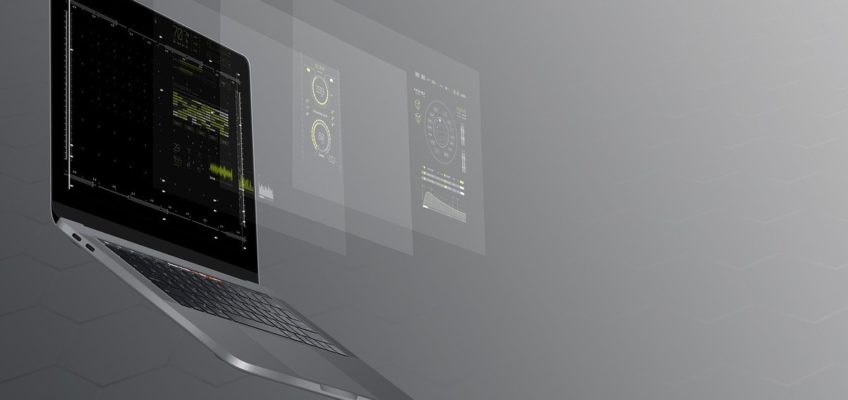Gone are the days when offices were just seen as blocks of concrete and steel in which we work. Increasingly they’ve become smart.
By Maria Letizia Mariani, Market Group Leader Europe, Signify
Forward-thinking organisations are capitalising on this trend –transforming offices into structures for promoting employee productivity, wellbeing and competitive advantage.
With new levels of connectivity, and the rise of the Internet of Things, people expect to be online 24/7. They want to access what they need, when they need it, with services tailored to suit them. The same applies to offices where people expect more from advanced technology in the workplace.
Leading the charge in smart building technology is connected LED lighting. And while most people are familiar with the energy savings and lower maintenance costs afforded by switching to LED, few really appreciate the role lighting can play in increasing the operational efficiency of their business and comfort, productivity and wellbeing of their workers.
With new levels of connectivity, and the rise of the Internet of Things, people expect to be online 24/7 Share on XConsultancy firm Deloitte has been at the forefront of adopting smart office technology. It’s Dutch headquarters, ‘The Edge’ in Amsterdam, is dubbed the most intelligent and sustainable office in the world. Its connected lighting system, from signify was instrumental in creating a more comfortable, productive and sustainable environment for its employees. Taking a leaf from the book of their Dutch colleagues, Deloitte Digital has now equipped its office in Milan with similar technology – becoming the first office in Italy to use our flagship Interact Office lighting system. In this instance, some 250 office luminaires are connected to and powered by the building’s computer cabling (Power over Ethernet network). This does two things. Firstly, it standardises wiring and eliminates the need for separate electrical wiring to power the lights. Secondly, it makes it easy for the lighting to be integrated into the building’s IT network.
Forward-thinking organisations are transforming offices into structures for promoting employee productivity, wellbeing and competitive advantage Share on XOf course, the company expects to reap 50-70% energy savings and lower maintenance costs by switching to new energy efficient smart lighting. The long-lasting connected lights automatically dim during the day depending on outside light levels and switch off when people leave meeting rooms. They also send data on their performance and energy use to the building’s facility manager. But energy savings are only a part of the Deloitte Digital story.
The long-lasting connected lights automatically dim during the day depending on outside light levels and switch off when people leave meeting rooms Share on XMuch more than energy savings
Managers at the office in Milan, wanted their staff to have greater control of their workspace. They saw a role for lighting to support flexible working and the company’s new open plan office environment. They also wanted to gain valuable insights into how people use spaces in the office, so that they could improve operational efficiencies and reduce costs further.
Where the value of connected lighting really comes into its own as it offers building managers insights into how well their office space is utilised Share on XOf course, people are the biggest cost to any organisation. While figures vary depending on office size and type of organisation, average office expenditures (per square foot, per year) broadly equate to $3 for utilities, $30 for rent, and $300 for people cost. This means a 10% increase in energy efficiency will create a $0.30 saving per square foot while a 10% saving in people costs will generate a $30 saving per employee per square foot. And this is where the value of connected lighting really comes into its own as it offers building managers insights into how well their office space is utilised. By better utilising space, companies can make big savings.
Few people really appreciate the role lighting can play in increasing the operational efficiency of their business and comfort, productivity and wellbeing of their workers Share on XOccupancy sensors embedded in the office luminaires acquire data and the resulting information tells a facility manager if a room or space is occupied or not. Over time an accurate model depicting space utilisation is built. At The Edge, Deloitte’s office in Amsterdam, analysis of such data revealed that the office was under-utilised. Subsequently, the company added 1,000 more staff, realising an annual space utilisation saving of EUR 3.6 million!
Deloitte expects to reap 50-70% energy savings and lower maintenance costs by switching to new energy efficient smart lighting Share on XWorkers are taking control
It’s not all about savings though. Deloitte Digital staff in Milan can personalize the lighting in their immediate space using their smart phones. This contributes to employee satisfaction – a proven factor in attracting and retaining top talent. Furthermore, employees can now adjust light levels to suit any given task, helping them to improve their productivity.
Deloitte Digital staff in Milan can personalize the lighting in their immediate space using their smart phones Share on XFinally, our Interact Office lighting system in Milan offers flexibility for the future. Software apps can be written to it using its APIs, making integration into platforms, such as room booking systems, quick and straight forward. Looking to the future, Deloitte and Signify share a similar vision – believing that lighting is a convenient backbone for truly smart offices. Offices that improve the lives of people at work and transform the way businesses operate.
Employees can now adjust light levels to suit any given task, helping them to improve their productivity Share on X








